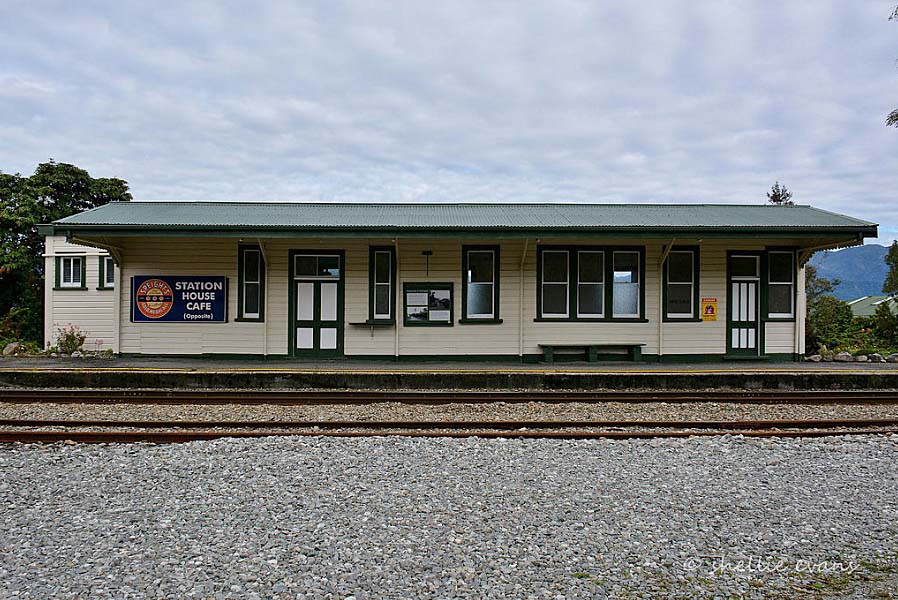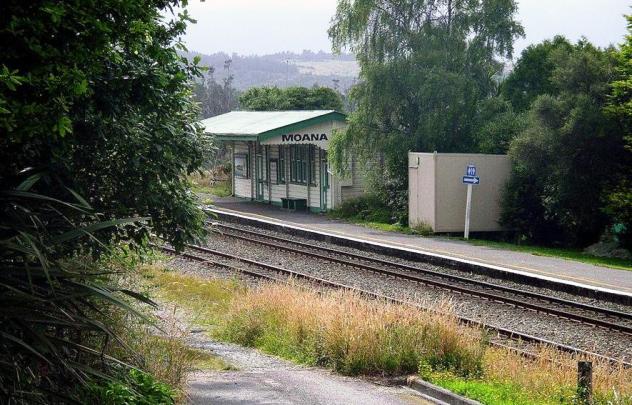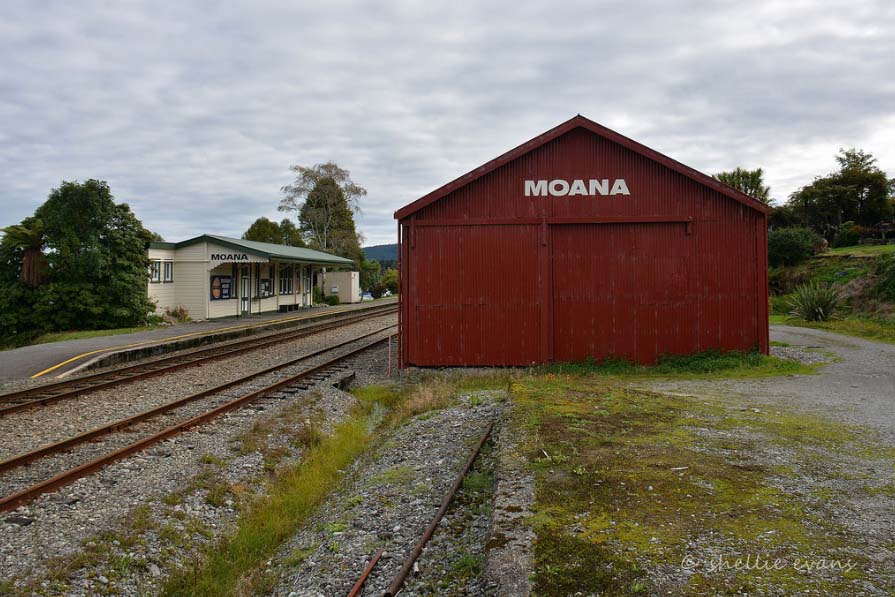Considered to be an exceptionally fine remaining example of the Troup class A station, the single storeyed timber Moana Railway Station, situated beside the northern shore of Lake Brunner, was constructed in 1926 to replace the previous railway station (of similar design) that had burnt down on this exact site the year before. Designed by renowned architect and engineer, George Alexander Troup, Type A Stations were a significant group of standard design stations in New Zealand, once common but now relatively rare. The building has aesthetic, architectural, historical and social significance or value. Kōtukuwhakaoka is the Māori name for both the Arnold River and Lake Brunner on Te Tai Poutini (the West Coast), both features being named after a visiting North Island rangatira killed by one of the two taniwha that patrolled the lake. The area has a long Māori association as a place for occupation and resources. In 1886 the Midland Railway Company was granted a 10-year concession to construct a railway from Foxhill, south of Nelson, to Springfield in Canterbury, via the Brunnerton on the West Coast. When the company opened the railway from Brunnerton in November 1892, Moana was only a flag station. The railway reached Jackson by March 1894 but then the company folded, its assets were seized by the Government in 1895 and eventually came into the ownership of New Zealand Railways (NZR). Following the opening of the railway, Pākeha settlers began establishing timber mills in the area and the Lake Brunner Sawmill Company had a 7-chain siding at Moana station in June 1895. The same month saw the opening of a new lean-to addition to the station that incorporated room for a booking office and telephone station. Other facilities at Moana in 1895 included a 200-foot-long platform and 12-chain loop (siding). Moana village, overlooking Lake Brunner, started to become a popular tourist resort by the late nineteenth century. It became a destination for ‘picnic trains’ where carriage-loads of day-trippers would disembark at this small station. Already by the early 1900s there were at least a couple of other additions to the station building (post office, telephone bureau, ladies’ waiting room). The demand for refreshments at the station resulted in the eventual erection of a tearoom addition at the western (footbridge) end of the station building in 1911. Moana was the only staffed station on the Stillwater-Otira railway line. By 1925 the facilities at Moana included fixed signals, a passenger platform, a station building, a goods shed, a loading bank, and cattle and sheep yards. In the yard there was a crossing loop able to hold 69 wagons, a loop (30 wagons), goods shed siding loop (14 wagons), and two backshunts both able to hold 12 wagons. On 15 April 1926, the railway station and refreshment rooms were burnt to the ground by a fire which started in the women's waiting room. A temporary railways hut was used at Moana until a new station could be erected but the Railways Department decided not to rebuild the tearooms at this time. Set within the wider context of the Moana Railway Station Historic Area, the present Moana Railway Station building is slightly larger than that which burnt down. It was built under the supervision of John Mahoney, foreman of works for the West Coast, and completed by October 1926 at a cost of approximately £800. The building has a gable pitch roof above a lean-to timber structure with adjoining verandah. The exterior has rusticated weatherboard cladding and the roof is corrugated steel. The building is a Troup Class A design, incorporating (when built) an office, lobby, ladies’ waiting room and toilet, but in the reverse order to the standard design. The main entrance, situated towards the east end of the north elevation facing the rail tracks, is a pair of double doors and fanlights, flanked by narrow sash windows. A line of wider sash windows is to its west, and at the west end of the north elevation is the former postal lobby, accessed by its own door. Interior rooms have horizontal tongue-and-groove lining. The main office contains a fireplace and, like the lobby, has windows on the south side with views to Lake Brunner. In 1967 the Railways Department decided to make Moana an attended flag station, something that had been attempted earlier in 1942 and again threatened in 1953. In late 1985 the station was closed to all traffic except passengers and parcels. At some point, the verandah of the Moana Railway Station building was cut back to fit modern railway wagon profiles. The Moana Railway Station is still in use and Moana remains a popular stop for passengers on the TranzAlpine train.



Location
List Entry Information
Overview
Detailed List Entry
Status
Listed
List Entry Status
Historic Place Category 1
Access
Private/No Public Access
List Number
5004
Date Entered
6th June 1990
Date of Effect
6th June 1990
City/District Council
Grey District
Region
West Coast Region
Extent of List Entry
Extent includes part of the land described as Railway Land as shown on SO 876 & SO 9468, Westland Land District and the Moana Railway Station building thereon. Refer to the extent map tabled at the Heritage List/ Rārangi Kōrero Committee meeting on 30 July 2020.
Legal description
Railway Land as shown on SO 876 & SO 9468, Westland Land District
Location Description
The Moana Railway Station is located on the Midland Line which is adjacent to Ana Street, MOANA
Related listings
Stay up to date with Heritage this month
